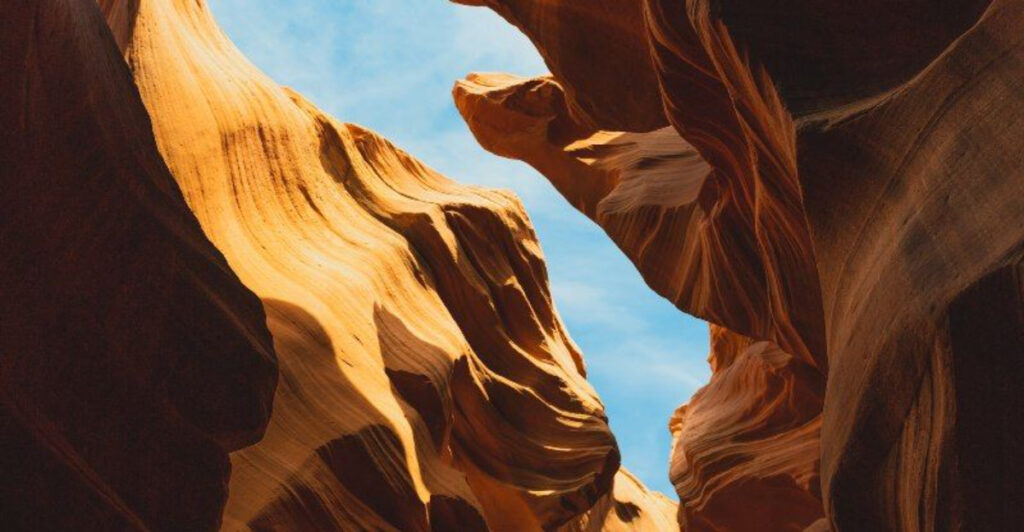Hidden in the heart of Arizona near the town of Page lies one of America’s most breathtaking natural wonders. Antelope Canyon draws visitors from around the world with its flowing sandstone walls and magical light displays. This slot canyon offers an unforgettable journey through narrow passageways carved by nature over millions of years. Whether you’re a photographer seeking the perfect shot or simply someone who appreciates natural beauty, Antelope Canyon promises an experience unlike anywhere else on Earth.
1. World-Famous Slot Canyon Formation
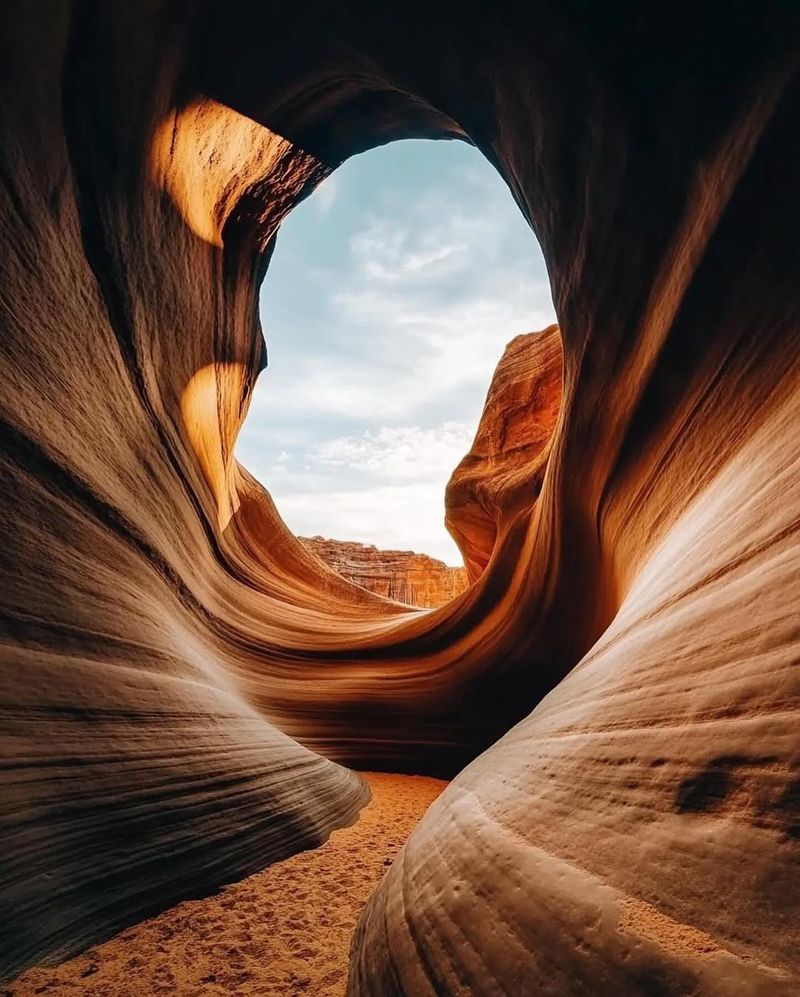
Millions of years ago, flash floods and wind began sculpting what would become one of Earth’s most photographed slot canyons. The rushing waters carved through Navajo Sandstone, creating narrow passageways with walls that seem to flow like frozen waves.
Today, these sculpted corridors stretch deep underground, with some sections barely wide enough for a single person to pass through. The canyon’s smooth, undulating walls tell the story of countless flash floods that shaped this underground masterpiece.
Visitors often describe walking through Antelope Canyon as entering a natural cathedral, where every curve and crevice has been perfectly crafted by the forces of nature over geological time.
2. Upper and Lower Canyon Adventures
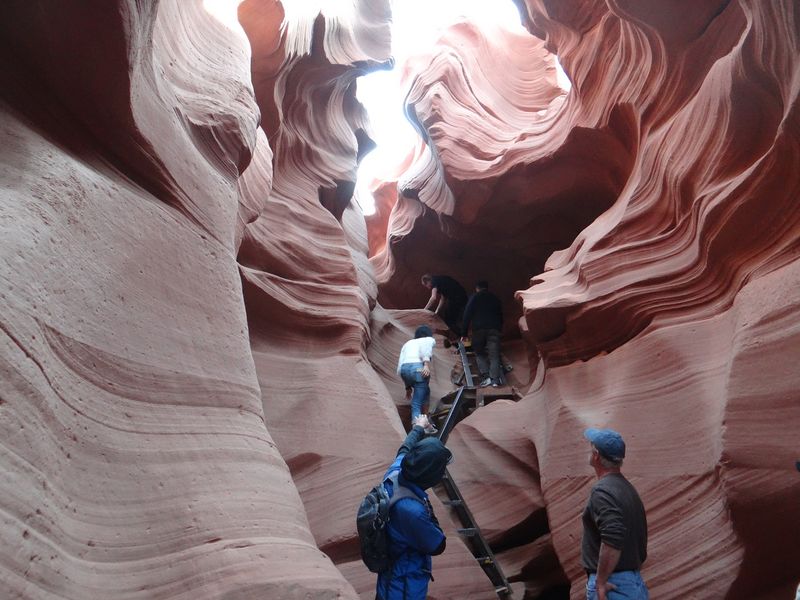
Two distinct experiences await visitors at Antelope Canyon, each offering its own unique personality and challenges. Upper Antelope Canyon, nicknamed “The Crack,” provides easier access with ground-level entry and wider walkways perfect for all ages.
Lower Antelope Canyon, known as “The Corkscrew,” requires climbing down metal staircases and navigating tighter spaces. This section rewards adventurous spirits with more intimate viewing experiences and fewer crowds during certain times of day.
Both sections showcase stunning geological formations, but photographers often prefer Upper Canyon for its famous light beams, while Lower Canyon offers more dramatic rock formations and spiral-like passages that create incredible photographic opportunities.
3. Magical Light Beam Spectacle
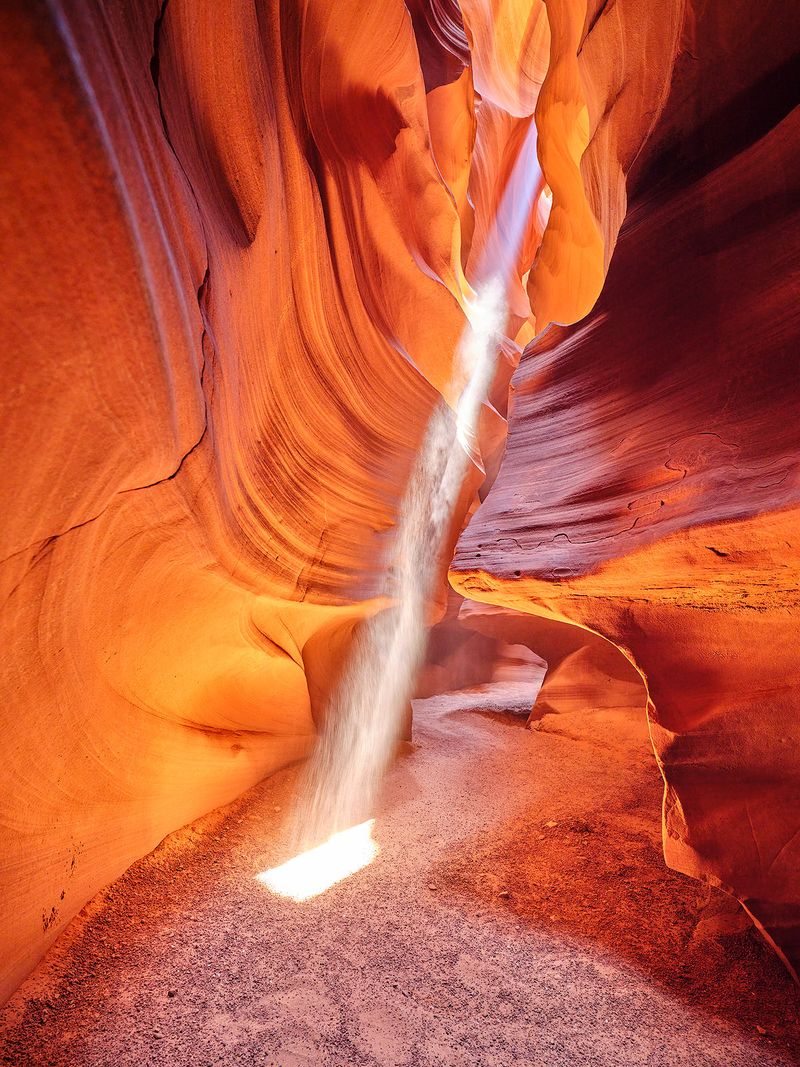
Between late spring and early fall, Antelope Canyon transforms into a natural light show that leaves visitors speechless. Sunlight filters through narrow openings above, creating ethereal beams that dance across the canyon floor like golden spotlights.
The best light beam viewing happens between 11 AM and 1:30 PM, when the sun sits directly overhead. These luminous columns seem to bring the canyon walls to life, highlighting every texture and curve in the sandstone.
Photographers travel thousands of miles just to capture these fleeting moments, as the light beams shift and change throughout the day, creating an ever-evolving natural masterpiece that’s never quite the same twice.
4. Photography Paradise Destination
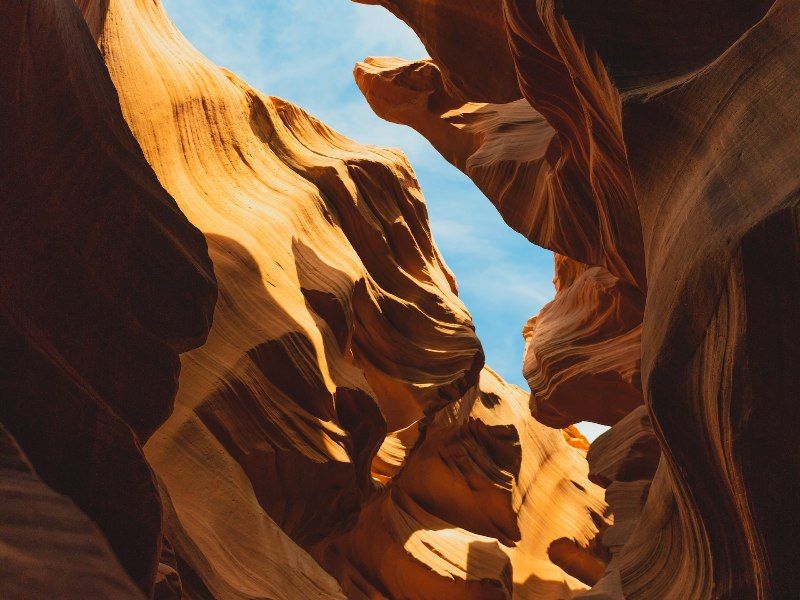
Professional and amateur photographers consider Antelope Canyon one of the most rewarding subjects in the American Southwest. The canyon’s natural curves create leading lines that draw the eye deeper into each frame, while the interplay of light and shadow adds drama to every shot.
Camera settings become crucial here, as the contrast between bright light beams and dark canyon walls challenges even experienced photographers. Many visitors discover that their smartphone cameras can capture surprisingly beautiful images in this naturally lit environment.
The canyon’s colors shift throughout the day, offering purple and blue tones in softer light, then exploding into brilliant oranges and reds when direct sunlight hits the walls.
5. Guided Tours Only Policy
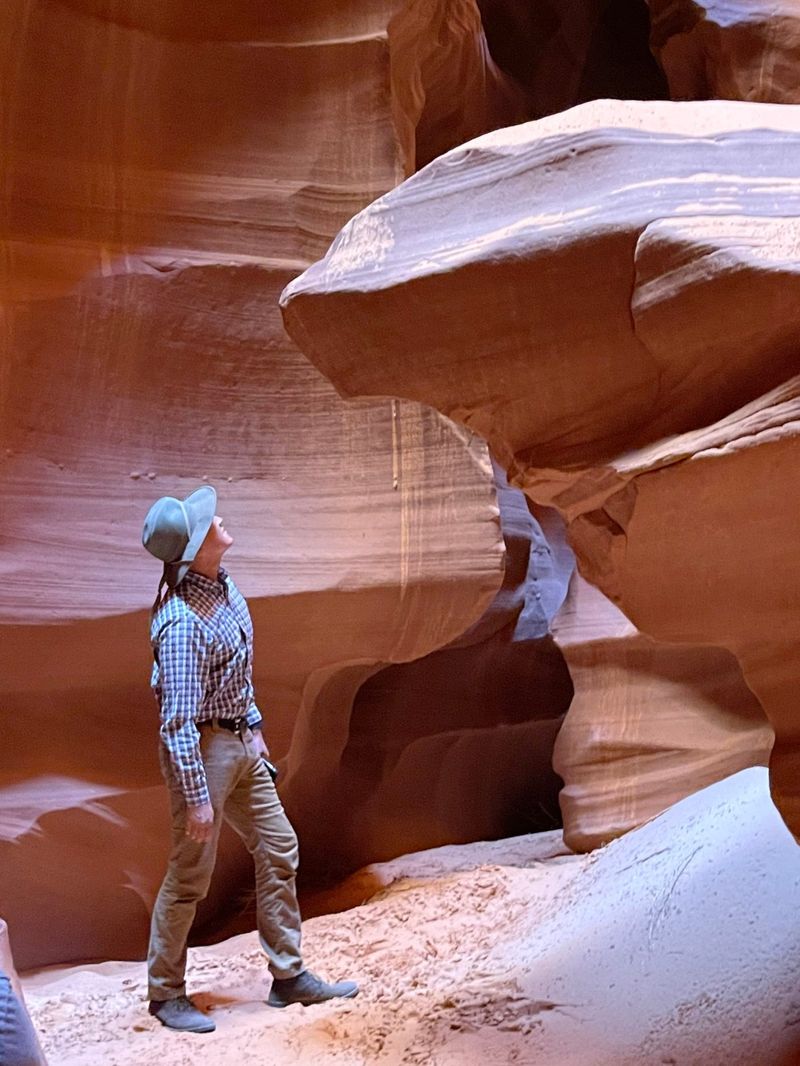
Every visitor to Antelope Canyon must join an authorized guided tour, as the canyon sits on sacred Navajo land. This policy protects both the delicate environment and ensures visitor safety in an area prone to flash flooding.
Experienced Navajo guides lead small groups through the canyon, sharing cultural knowledge and pointing out the best spots for photographs. These guides know exactly when and where the light will be perfect for capturing those iconic images.
Tour companies offer different experiences, from basic walking tours to specialized photography workshops. The guided approach means visitors learn about the canyon’s formation, cultural significance, and safety considerations while exploring this natural wonder with knowledgeable local experts.
6. Sacred Navajo Cultural Heritage
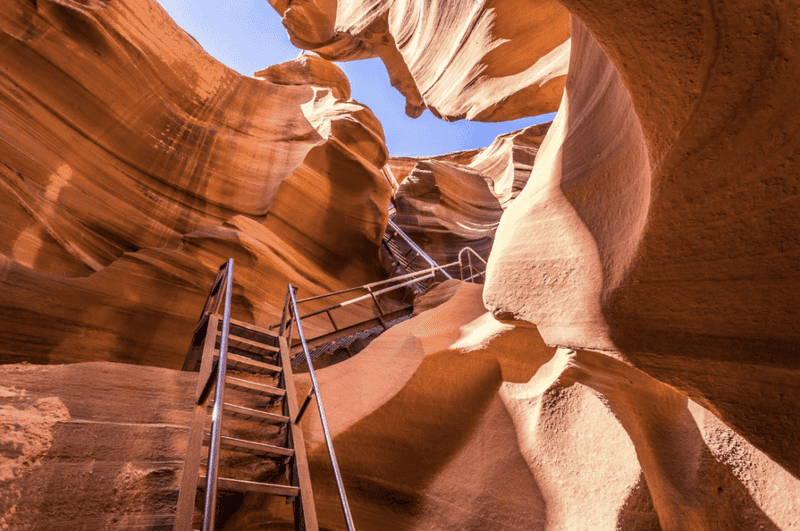
The Navajo people call Upper Antelope Canyon “Tsé bighánílíní,” meaning “the place where water runs through rocks,” perfectly describing how this wonder was formed. Lower Canyon’s name, “Hazdistazí,” translates to “spiral rock arches,” reflecting its distinctive corkscrew-like passages.
Local guides share stories passed down through generations, explaining how their ancestors used these canyons for shelter and spiritual ceremonies. The canyon remains a sacred site where traditional blessings are performed every four years.
Visitors learn that respecting this cultural heritage means following guidelines about behavior, photography, and interaction with the natural environment. This cultural dimension adds depth to the experience, connecting tourists with the rich history of the land.
7. Gateway to Multiple Attractions
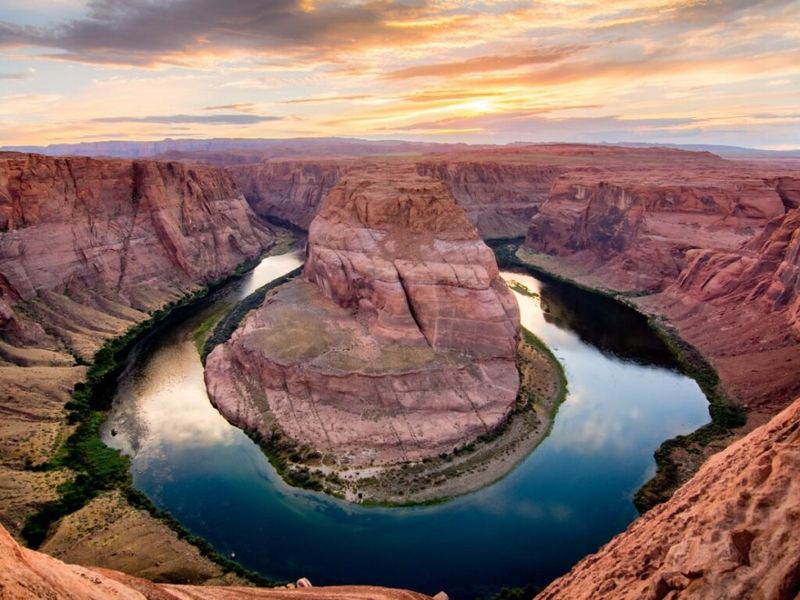
Page, Arizona serves as the perfect base camp for exploring multiple natural wonders within a short drive of each other. Horseshoe Bend sits just minutes away, offering dramatic views of the Colorado River’s famous horseshoe-shaped curve.
Lake Powell provides water recreation opportunities, while Glen Canyon Dam offers engineering marvels and visitor centers explaining the area’s water management. Many travelers plan multi-day trips to experience all these attractions in one adventure-packed visit.
The proximity of these world-class destinations makes Page one of the most efficient places to experience the American Southwest’s natural beauty. Visitors can easily fill several days exploring slot canyons, massive lakes, and geological formations that showcase millions of years of natural history.
8. Ever-Changing Color Symphony
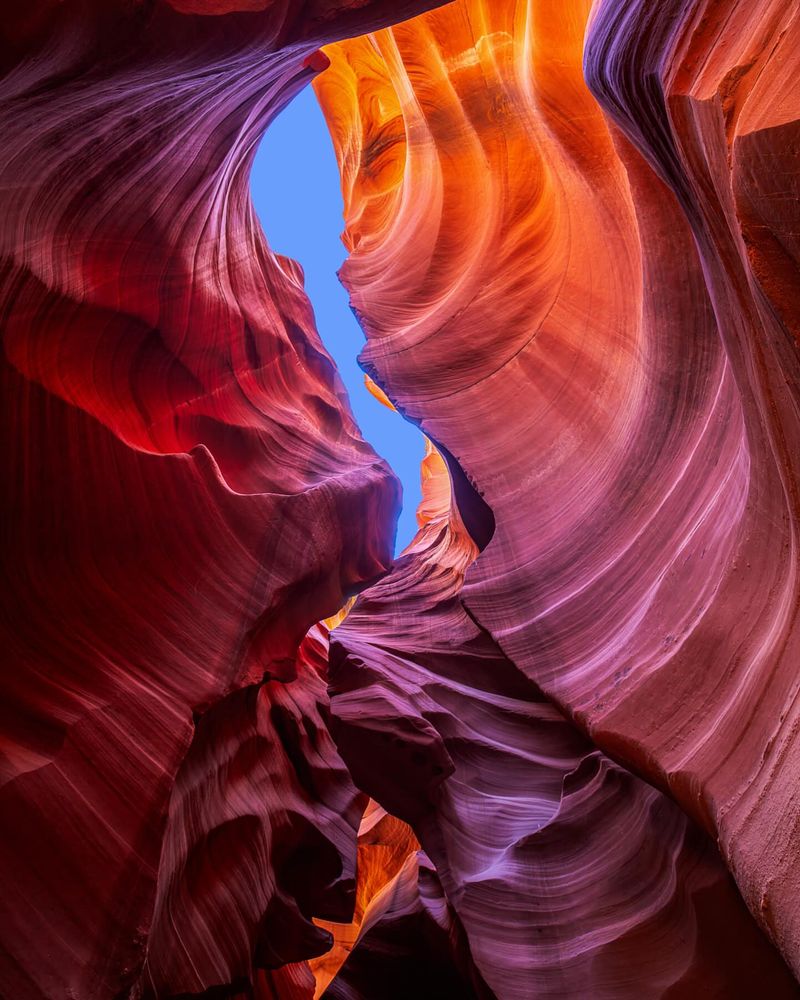
Antelope Canyon’s walls perform a daily color show that changes with the sun’s position and seasonal variations. Morning light brings out subtle purples and deep blues in the shadowed areas, creating a cool, mysterious atmosphere.
As midday approaches, the famous oranges and golds emerge, turning the canyon into a warm, glowing environment that seems almost otherworldly. Late afternoon light adds red tones and creates longer shadows that emphasize the rock’s flowing textures.
Seasonal changes also affect the color palette, with summer’s intense light creating more dramatic contrasts, while winter’s softer illumination reveals subtle gradations and details often missed during peak tourist season. Each visit offers a completely different visual experience.
9. Alternative Adventure Options
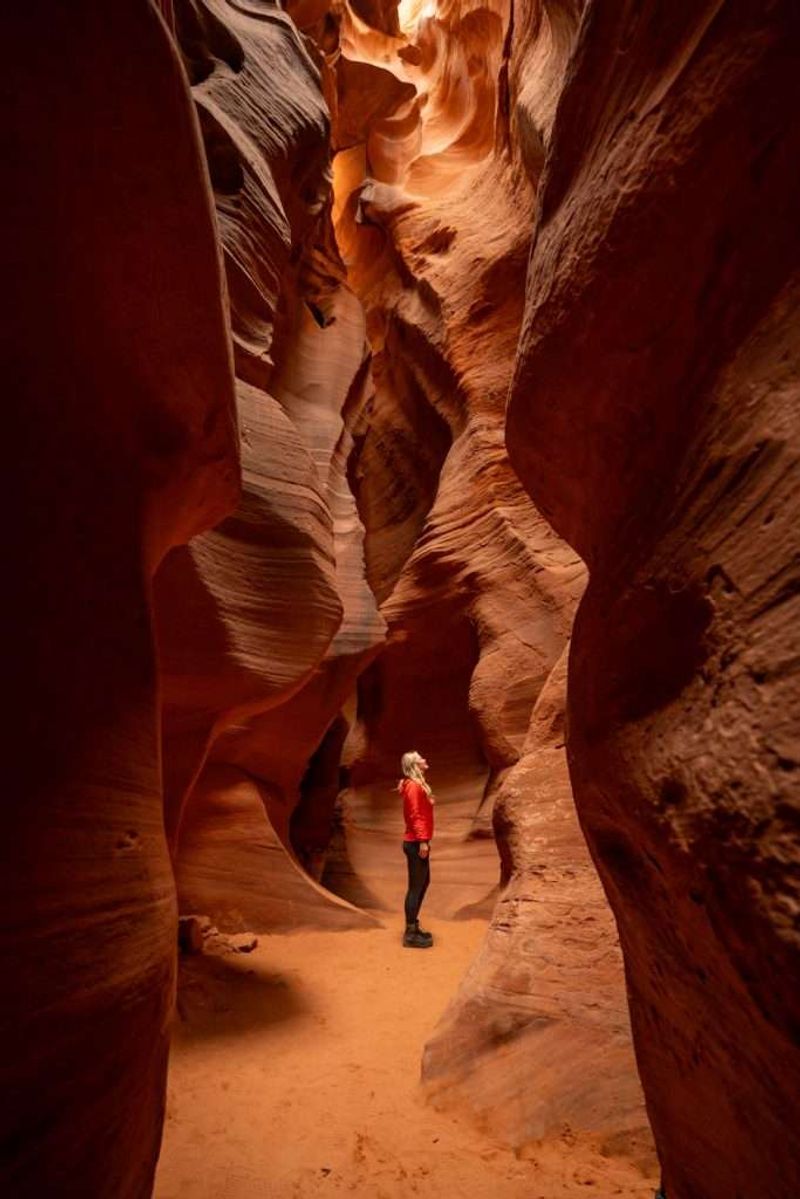
Beyond the famous Upper and Lower sections, the Page area offers additional slot canyon experiences for adventurous travelers seeking less crowded alternatives. Canyon X provides a more rugged exploration opportunity with smaller tour groups and longer hiking distances.
Secret Canyon and Rattlesnake Canyon offer similar geological formations with fewer restrictions on photography equipment and more time to explore at your own pace. These alternatives often provide more personalized experiences with knowledgeable guides.
Adventure-seekers can combine multiple canyon visits in a single day, experiencing different lighting conditions and rock formations. Each canyon has its own personality, from tight squeezes that challenge claustrophobic visitors to wider chambers that showcase massive geological formations carved by ancient floods.
10. Year-Round Natural Beauty
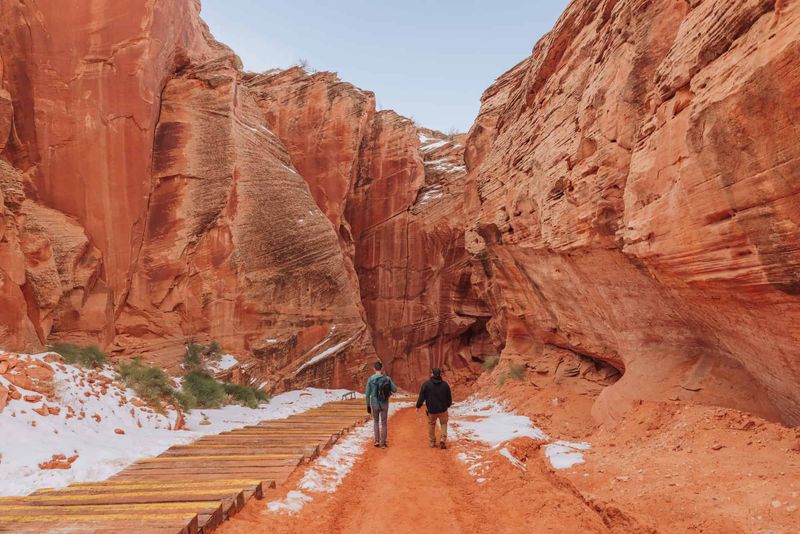
While summer brings the famous light beams that made Antelope Canyon Instagram-famous, each season offers distinct advantages for visitors. Winter months provide softer, more even lighting that eliminates harsh shadows and reveals subtle details in the rock formations.
Spring and fall offer comfortable temperatures and moderate crowds, making these seasons ideal for visitors who want to avoid extreme heat and peak tourist congestion. The lighting during these shoulder seasons creates beautiful, warm tones without the intense contrasts of summer.
Photographers often prefer winter visits for the gentler light that allows for easier camera settings and more balanced exposures. Year-round access means visitors can plan trips based on their preferences for lighting, weather, and crowd levels rather than being limited to specific seasons.

